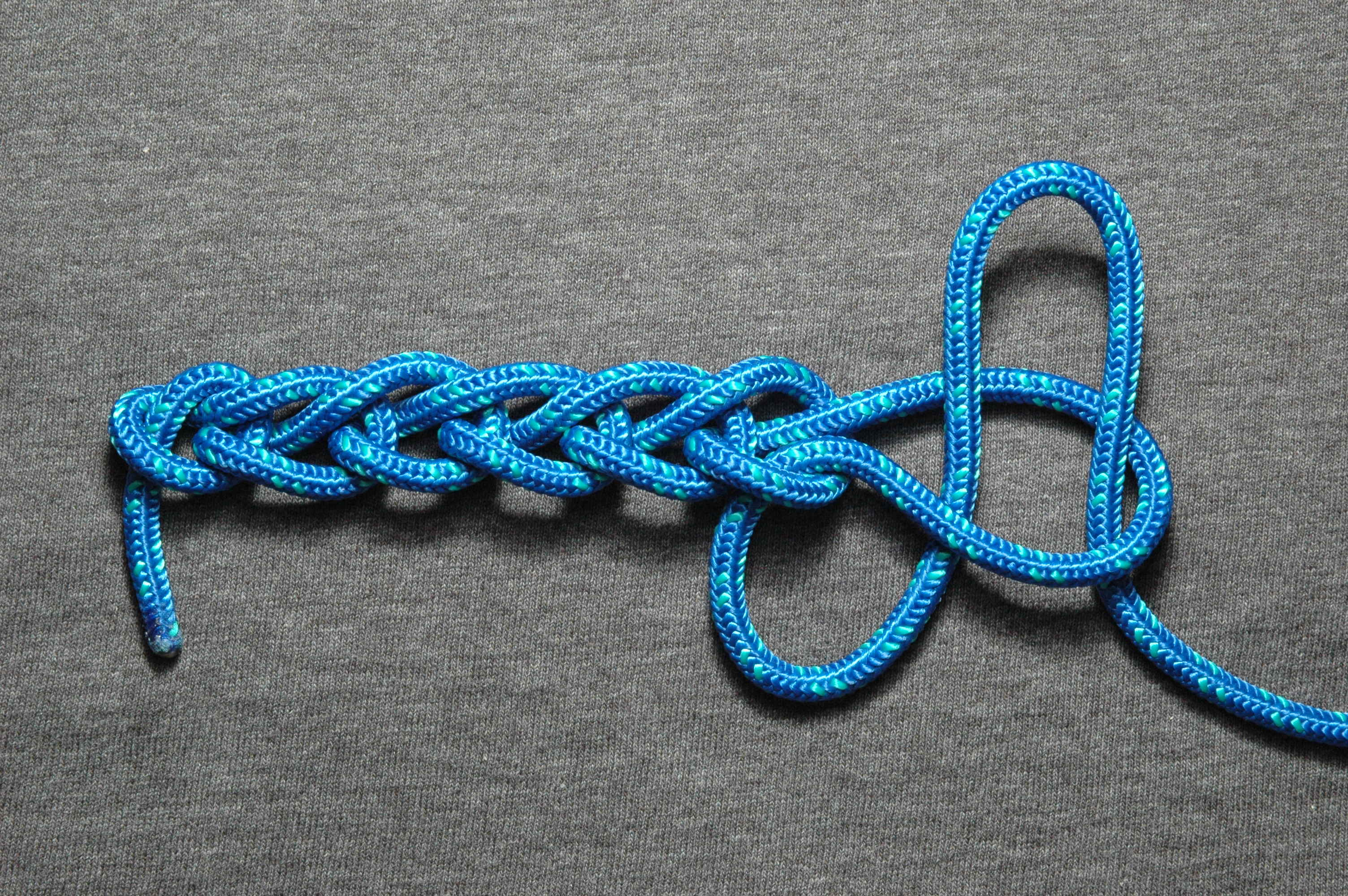KNOTS
1) Thumb knot
It is the simplest of knots and it is commonly used in daily life. Once it is tied and under strain, it is very hard to untie.
Alternative name: Stopper Knot, Overhand Knot
Uses:
Used as a stopper knot
Provide a hand or leg hold
Tied at both ends of the rope to prevent it from fraying
Used to prevent a line from running through an opening
Used at the bottom of a vertical climb as a weight
2) Figure -of-Eight knot

The Figure-of-Eight knot does not jam as tightly under strain, making it easier to untie.
Alternative name: Beautiful Stopper
Uses: Used as a stopper knot
3) Sheet Bend

Uses: To join 2 ropes of unequal thickness
Function: Attatching flag to flag line
4) Reef knot
(Right over left, Left over right)

Alternative name:
Square Knot
Flat Knot
True Knot
Use: To join two ropes of equal thickness
Function: To secure bandages
5) Fisherman's Knot

Alternative name:
True lovers' knot
Waterman's knot
Englishman's knot
Use: To join two ropes of equal thickness together
(Especially if the ropes are made out of slippery material)
6) Fireman's Chair Knot
Use: Used in rescue work for lifting or lowering a person
7) Sheepshank
The sheepshank can be untied easily just by pulling the centre line. This knot has to be kept under a load or it will become untied.

Use:
To shorten a rope
As a means of bypassing a worn out section of a rope.
8) Manharness Knot
(pretzel)
Use: Forms a loop for hauling heavy objects in a direction parallel to the axis of the rope
9) Clove hitch
Use: Used to secure a rope to to spar/pole etc.
10) Timber Hitch
Use:
Used to secure a rope to a pole/spar etc.
Used to make an adjustable loop to secure a drag rope to a log or other objects.
11) Highwayman's Hitch
When the hitch is tied, the two ends must be carefully noted. In the illustrated diagram, End Y can take any strain required whereas pulling End X will release the rope. Mistakes made can result in severe consequences.
End Y ↗ ↑
End X
Use: Used to secure a rope to any fixture and quickly releasing when needed.
12)
i) Fixed Bowline
Alternative name: King of Knots
Use:
Used to make a loop that would not slip in rescue works
Used to secure a rope to a ring or eye
ii) Running Bowline
Use:
Used in rescue works when a running noose is strained
Used to form a running noose
13) Chain Knot (inclusive of slip knot)

Use: Used to shorten long ropes
THE 8 BASIC KNOTS:
1) Thumb Knot
2) Figure-of-Eight Knot
3) Sheetbend
3) Sheetbend
4) Reef Knot
5) Fisherman's Knot
5) Fisherman's Knot
6) Sheepshank
7) Clove Hitch
8) Fixed Bowline
LASHINGS (used to secure two or more spars together using ropes)
1) Round Lashing
Use: Used to tie two poles together

2) Sheer Lashing
Alternative name: Shear Lashing
Use: Used to bind two adjacent poles together and can be opened up to form a pair of sheer legs
3) Square Lashing
Use: Used to bind two poles crossing each other at an angle of 90-degrees

4) Diagonal Lashing
Use: Used to secure two poles crossing each other diagonally and standing apart at an acute angle to each other.

5) Gyn Lashing (aka Figure-of-Eight Lashing)*haven learn
Use:
Used to bind 3 or more poles together
Used to tie 3 poles together to form a tripod

PRESSURE LAMP


PARTS OF A TENT





No comments:
Post a Comment